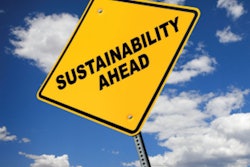Looking to establish simple goals to drive sustainable packaging? Many companies are focusing on lightweighting, recyclability, recycled content, and renewable content for their sustainable packaging efforts. Bonus: All of these metrics can be measured based on empirical information about the final design alone, thus removing the need to assess the environmental performance with something like a life-cycle assessment (LCA), right?
Wrong.
Taking a life-cycle view ensures that improvements you make in design actually do translate into measurable improvements in environmental performance, not to mention that a holistic approach also ensures you’re addressing the biggest issues for your particular design. Here is a look at why you are putting your brand at risk without taking a life-cycle view of your package design.
Lightweighting
Less is more with packaging, particularly from a consumer’s perspective. But as you know, a primary function of packaging is to protect the product. The challenge is to find that sweet spot between reducing packaging weight and preventing product loss. Taking a life-cycle view is important for evaluating this trade-off by finding the balance between material weight, impact, and product protection, and ensuring you’re not spending resources finding ways to lightweight when the materials themselves or something in the product is a much bigger concern to your stakeholders. If reducing packaging weight also involves the use of alternative materials, LCA can ensure that the environmental burden is not inadvertently increased elsewhere in the packaging’s life cycle.
Example: OB tampons have a lower waste footprint because they exclude the applicator. Understanding the extent of the reduction simply requires calculating the difference in material needed. But OB did an LCA on the comparison anyway, just to validate that going to market with a claim of “less waste” wasn’t disingenuous due to other impacts in the supply chain. Since raw materials are the biggest impact of tampons, reducing the material needed to achieve the same function was inherently a positive step. This may not always be true though, thereby increasing the need for quantifying the impact comparison; food or electronics packaging are particular examples where lightweighting is more likely to jeopardize the protection of the product and therefore increase the chance of spoilage or waste.
Recyclability and recycled content
Does increasing the recyclability or amount of recycled content improve environmental performance? It intuitively makes sense to recover materials for productive second use rather than incinerate or landfill them, but it’s also important to consider the energy or resource burden required to recycle materials. For some materials such as aluminum, recycled content is a clear winner over virgin content from an environmental perspective because both scrap collection and reprocessing require far less energy than virgin content production. For others, the outcome is not as obvious, either due to the use of renewable energy in virgin material production, inefficient material recovery systems, or other reasons. LCA can help illuminate the trade-offs associated with recycled content use by material. Through LCA, packaging designers can evaluate both environmental costs and benefits associated with recycling, as well as better understand environmental impact differences between virgin and recycled content production.
























